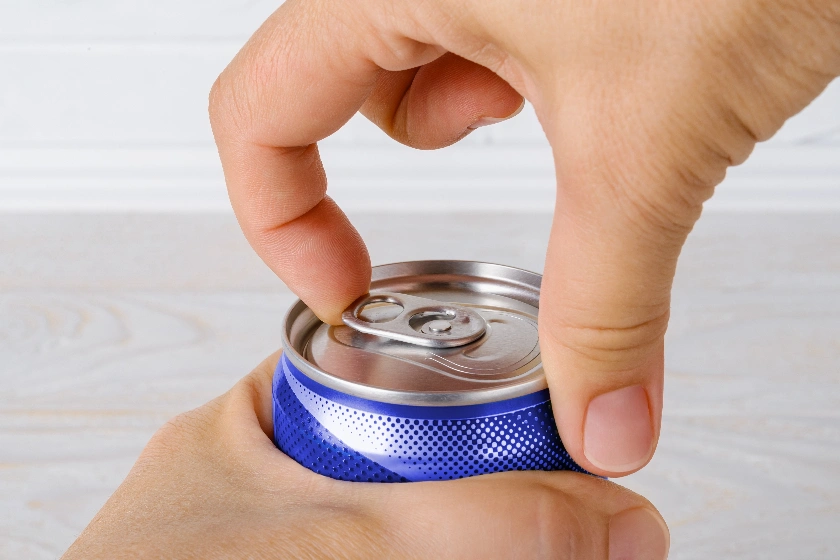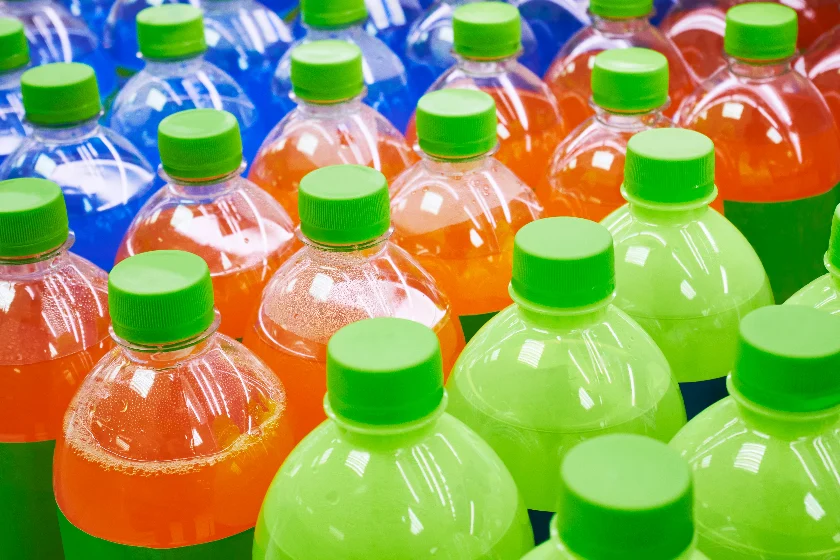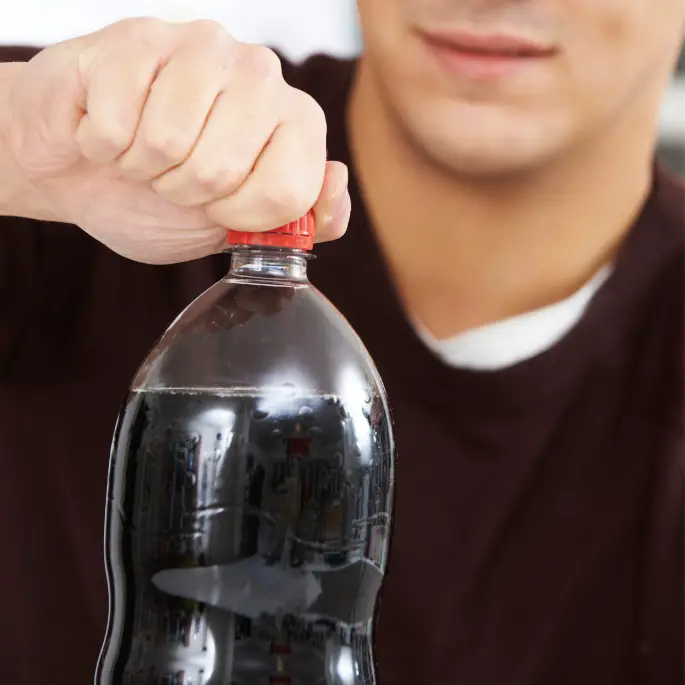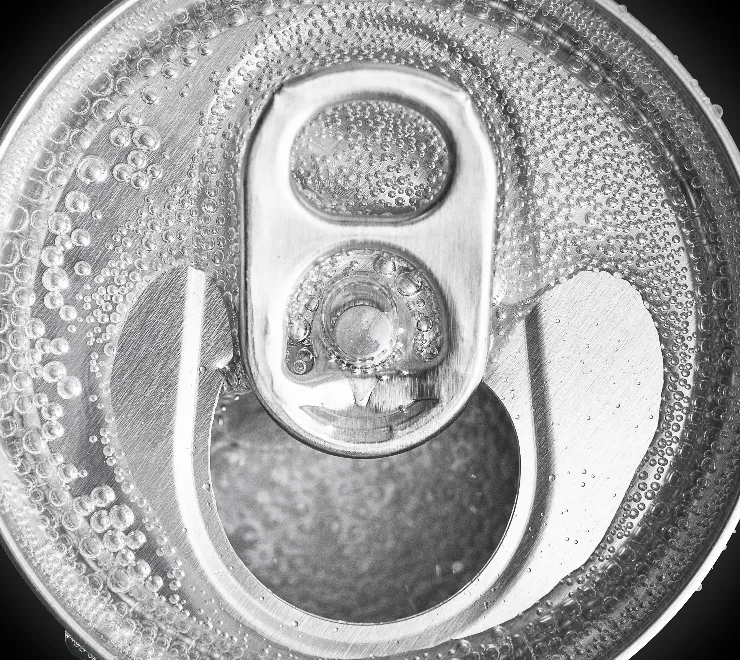
So you’ve just shaken up a can of soda, and now you want to open it without covering yourself in the spray. Whether you’ve dropped it on the floor or your kid has decided it would be hilarious to shake up your drink, you’ll get soaked if you’re not careful. Instead, follow these tips to calm a shaken soda.
The simplest method for calming a bottle of shaken soda is to leave it in a cold place for 30 minutes to an hour. You can also release the bubbles of carbon dioxide by tapping around the sides of the can or bottle. Other techniques include wetting the bottle cap and opening it very slowly.
The key things here are the cold temperature and also tapping the sides rather than the top.
I’ll fill you in on some of the details on how to open your drink and what’s going on inside that bottle with the gas. Most likely you don’t have to wait for an hour as it turns out, there are some simple tricks you can do.
How Long Will it Take a Shaken Soda to Settle Naturally?
This will depend on how long you shook the bottle and the temperature. Warmer temperatures mean the liquid can’t hold as much carbon dioxide gas.
When you shake or drop a bottle, the dissolved carbon dioxide in the liquid begins to group together along the sides and top of the container. This gas takes up more space as it expands, putting the contents under more pressure.
When you open the bottle, the higher pressure of built-up carbon dioxide forces the soda out in a fizzing jet – resulting in the sticky mess we want to avoid.
By putting the soda back into the fridge, you give the carbon dioxide time and suitable conditions to settle into the drink and the pressure to stabilize. Cold temperatures allow more CO2 to dissolve in liquid. How shaken up the contents are will affect how long this process takes.
In most cases, shaken soda settles if left in the fridge for about half an hour. You can always grab another can while you wait. If it’s really shaken up or left out of the fridge then it can take hours to settle.
But what if that was your only can, and you want to open it now – is there something you can do to settle the soda immediately?

How To Calm A Shaken Soda
Have you ever tried flicking the top of a can to settle a shaken soda only for the can to open with a fizz and spray everywhere? This easy trick doesn’t work well for most people, and many say that when they tried it, they still ended up with a mess.
People have come up with all kinds of methods to defuse the carbonated spray of a shaken soda bottle. While some swear by one technique, just as many people will say they’ve had no success.
The simplest way to be sure a soda won’t explode when you open it is to return the can or bottle to the fridge and leave it to settle again. The cold will help the carbon dioxide settle from where it has nucleated on the sides of the container.
1. Calm a Shaken Soda By Flicking the Sides
Hang on, you say – didn’t I say earlier that flicking the can doesn’t work? Tapping or flicking the top of a can does little to disperse the carbon dioxide because most bubbles form along the sides of the can. The top has an air gap so there are no bubbles there.
By tapping the side of the can, you knock the bubbles free from where they are hooked, allowing the gas to enter the top part of the bottle where there is a space for the gas.
The best way to disperse the gas bubbles is to give the side of the can a few taps, turn it a quarter, and repeat, until you have tapped all around the can. Once you’ve done this, it should be safe to open your can.
See this technique in action on OneHowto:
As demonstrated, the flicking results in very little fizz and waste when you open the shaken can.
When you shake a soda bottle made from clear plastic, you can quickly see how much fizz has collected along the top and sides, making this side-tapping technique even more helpful. You can tell when enough of the fizz has dispersed for you to safely open your soda.
2. Calm a Shaken Soda By Turning it Upside Down
Suppose your soda bottle wasn’t too severely shaken. In that case, this is a reasonably quick tip known and used by waiters who have accidentally dropped a drink or want to open a bottle without spraying the contents over everyone at the table.
Turn your shaken can or bottle upside down carefully and let it sit for about 10-30 seconds. The gas will disperse towards the bottom and slowly settle from the top gap. When you right the can again slowly, it should be OK to open without a fizz.
I recommend using this technique on a can that’s not too fizzy; open the bottle away from you in case of any remaining pressure.
3. Calm a Shaken Soda By Running Under Water
This tip helps defuse a shaken bottle of soda with a twist-off cap. Run a little bit of water over the bottle’s lid, then carefully begin to twist the cap by just the smallest amount, wait 10 seconds, and try again.
Each time you twist, you will hear the hiss of escaping gas. When you are no longer able to hear the sound of gas escaping, you can twist the lid off completely, and there should be no messy overspill.
You can always combine techniques, especially if you’re dealing with a bottle that has been excessively shaken. First, tap the sides of the bottle, and along the curve of the neck, then run the water and release the cap slowly.
Using both tips together, there should be no chance of a fizzy explosion. If you’re worried, you can always open the can or bottle over the sink to ensure you don’t make a mess.

Why Does My Shaken Soda Fizz?
Your shaken soda erupts in a sticky mess when you open it because of the carbon dioxide inside. During the bottling process, carbon dioxide gas is dissolved into the liquid under pressure so that it will be fizzy when you open your drink.
Eventually, that gas will slowly collect along imperfections on the container and in the space between the liquid and the lid. That gas will slowly disperse, and your drink will go flat. It’s still OK to drink but not as tasty.
This process takes a long time, as your drink is securely sealed. But even a lid is not totally impermeable, drinks still go flat when not opened. The gas will eventually move out of the bottle to balance the pressure.
Gas can also leave the liquid when the soda is agitated. Agitation can be caused when you stir a spoon through your drink – or drop the bottle on the floor.
When you shake or drop a can, all that dissolved gas is released from the liquid and expands as it returns to a gaseous form. The gas now takes up more space than it used to, and the contents can be under up to four times the pressure of the outside air.
When you open your bottle, those pressurized contents of soda and carbon dioxide need to go somewhere – resulting in a spray of foam and liquid.

Conclusion
You must calm the fizz to avoid a fizzy mess when opening a shaken soda bottle. Time and a cold environment will help the gas settle and disperse into the liquid. You can speed up this process by firmly tapping the sides to dislodge the new-formed bubbles of carbon dioxide.
